
Compatibility of G11 G12 and G13 Antifreezes - is it possible to mix them
Content
Antifreeze is an important working fluid whose main function is engine cooling and protection. This liquid does not freeze at low temperatures and has a high boiling and freezing threshold, which protects the internal combustion engine from overheating and damage due to volume changes during boiling. The additives included in the antifreeze have many properties that protect parts of the cooling system from corrosion and reduce their wear.
What are the composition of antifreeze
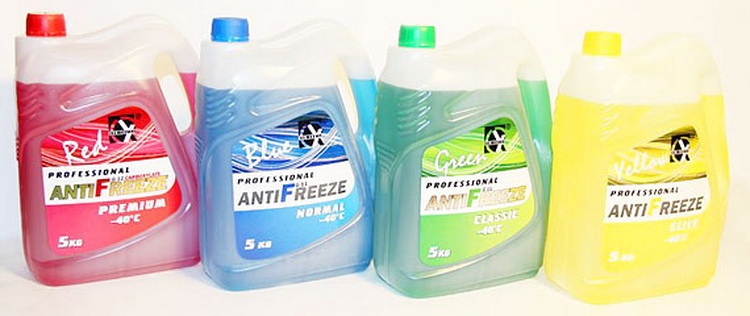
The basis of any cooling composition is a glycol base (propylene glycol or ethylene glycol), its mass fraction is on average 90%. 3-5% of the total volume of the concentrated liquid is distilled water, 5-7% - special additives.
Each country producing cooling system fluids has its own classification, but the following classifications are generally applied to avoid confusion:
- G11, G12, G13;
- by colors (green, blue, yellow, purple, red).
Groups G11, G12 and G13
The most common classification of cooling compounds was the classification developed by the VAG concern.
Composition gradation developed by Volkswagen:
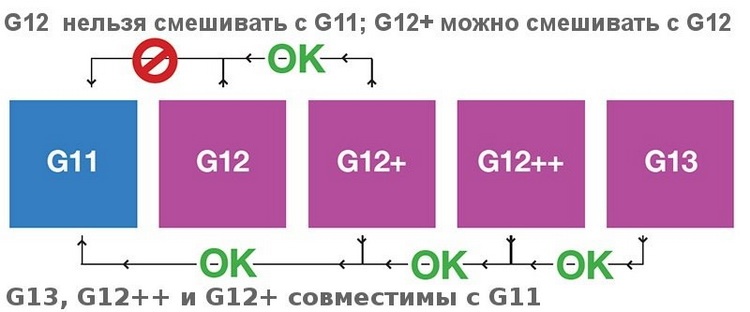
G11 - coolants created according to traditional, but outdated at the moment, technology. The composition of anti-corrosion additives includes a variety of inorganic compounds in various combinations (silicates, nitrates, borates, phosphates, nitrites, amines).
Silicate additives form a special protective layer on the inner surface of the cooling system, comparable in thickness to the scale on the kettle. The thickness of the layer reduces heat transfer, reducing the cooling effect.
Under the constant influence of significant temperature changes, vibrations and time, the additive layer is destroyed and begins to crumble, leading to a deterioration in the circulation of the coolant and causing other damage. To avoid a detrimental effect, silicate antifreeze should be changed at least every 2 years.
G12 - antifreeze, which includes organic additives (carboxylic acids). A feature of carboxylate additives is that a protective layer is not formed on the system surfaces, and the additives form the thinnest protective layer less than a micron thick only in places of damage, including corrosion.
His advantages:
- high degree of heat transfer;
- the absence of a layer on the inner surface, which eliminates clogging and other destruction of various components and parts of the car;
- extended service life (3-5 years), and up to 5 years you can use such a liquid with a complete cleaning of the system before filling it and using a ready-made antifreeze solution.
To eliminate this disadvantage, a G12 + hybrid antifreeze was created, which combined the positive characteristics of silicate and carboxylate mixtures through the use of organic and inorganic additives.
In 2008, a new class appeared - 12G ++ (lobrid antifreezes), the organic basis of which includes a small number of inorganic additives.
G13 - environmentally friendly coolants based on propylene glycol, which, unlike poisonous ethylene glycol, is harmless to both humans and the environment. Its only difference from G12++ is its environmental friendliness, the technical parameters are identical.
Green

Green coolants contain inorganic additives. Such antifreeze belongs to the class G11. The service life of such cooling solutions is not more than 2 years. Has a low price.
Recommended for use on old cars, due to the thickness of the protective layer, which prevents the formation of microcracks and leaks, in cooling systems with aluminum or aluminum alloy radiators.
Red
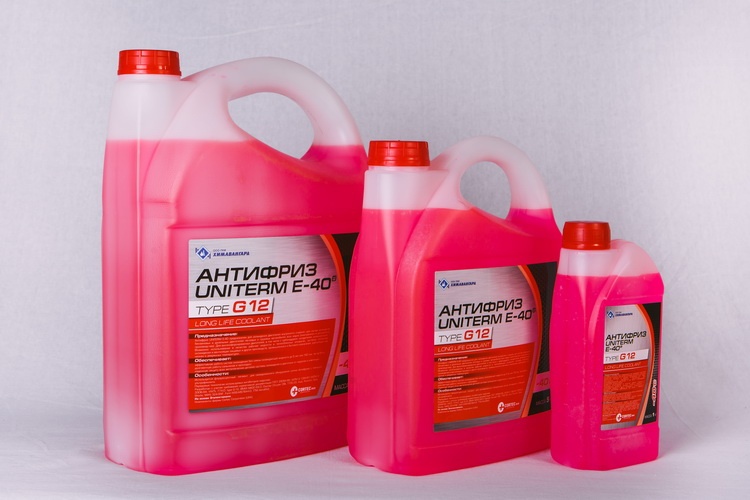
Red antifreeze belongs to the G12 class, including G12+ and G12++. It has a service life of at least 3 years, depending on the composition and preparation of the system before filling. It is preferable to use in systems whose radiators are copper or brass.
Blue
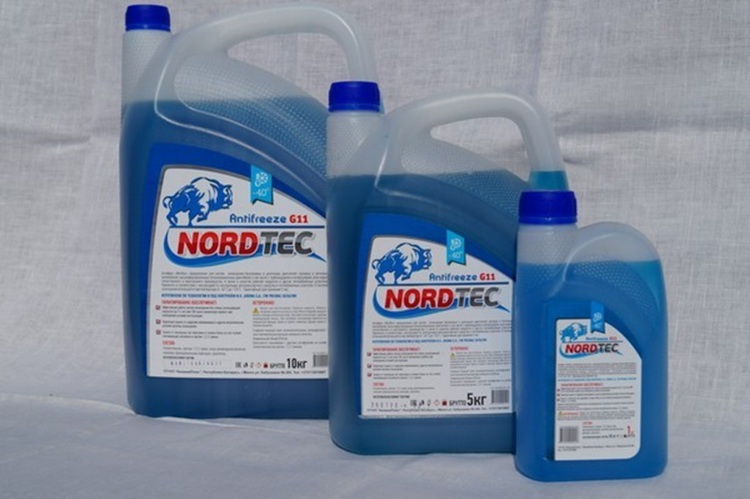
Blue coolants belong to the G11 class, they are often called Antifreeze. Mainly used in cooling systems of old Russian cars.
Purple

Purple antifreeze, like pink, belongs to the class G12 ++ or G13. It contains a small number of inorganic (mineral) additives. They have high environmental safety.
When pouring lobrid purple antifreeze into a new engine, it has a virtually unlimited life. Used on modern cars.
Is it possible to mix green, red and blue antifreeze with each other
In many cases, the color of an internal combustion engine cooling solution reflects its composition and properties. You can mix antifreezes of different shades only if they belong to the same class. Otherwise, chemical reactions may occur, which will sooner or later affect the condition of the car.
Antifreeze is strictly forbidden to be mixed with other types of coolants.
What happens if you mix the group G11 and G12
Mixing different types of antifreeze can cause problems over time.
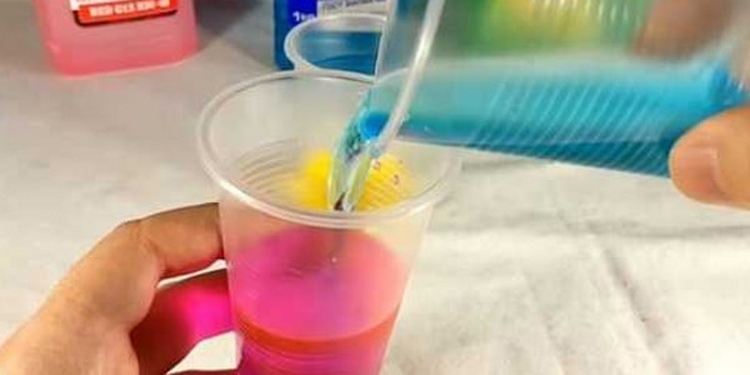

The main consequences of mixing silicate and carboxylate classes:
- corrosion of the internal surfaces of the cooling system;
- foaming of the working fluid;
- engine overheating;
- increase in fuel consumption up to 5%;
- blocking of internal combustion engine channels;
- clogging of radiators and other components of the cooling system;
- pump replacement;
- reduction in the service life of engine oil;
- other malfunctions.
Only in case of emergency, you can add different types.
In doing so, the following factors must be taken into account:
- it is necessary to mix cooling solutions with the same base (ethylene glycol only with ethylene glycol);
- silicate-free mixtures are strictly forbidden to be mixed with others;
- it is necessary to find an antifreeze suitable for the car and use it only when topping up and replacing the working fluid in the cooling system.
If it is necessary to add a small amount of coolant and there is no suitable one, it is preferable to add distilled water, which will slightly reduce the cooling and protective properties, but will not cause chemical reactions that are dangerous for the car, as in the case of mixing silicate and carboxylate compounds.
How to check antifreeze compatibility


To check the compatibility of antifreezes, it is necessary to carefully study the composition, since not all manufacturers adhere to color or class classifications (G11, G12, G13), in some cases they may not even indicate.
Table 1. Top-up compatibility.
Topping up fluid type | Type of antifreeze in the cooling system | ||||
G11 | G12 | G12 + | G12 ++ | G13 | |
G11 | + | Mixing prohibited | + | + | + |
G12 | Mixing prohibited | + | + | + | + |
G12 + | + | + | + | + | + |
G12 ++ | + | + | + | + | + |
G13 | + | + | + | + | + |
Topping up liquids of various classes is only permissible for operation for a short period of time, after which it is necessary to perform a complete replacement with flushing of the cooling system.
Properly selected antifreeze in accordance with the type of cooling system, the composition of the radiator and the condition of the car, its timely replacement will ensure the safety of the cooling system, protect the engine from overheating and help to avoid many other unpleasant situations.

